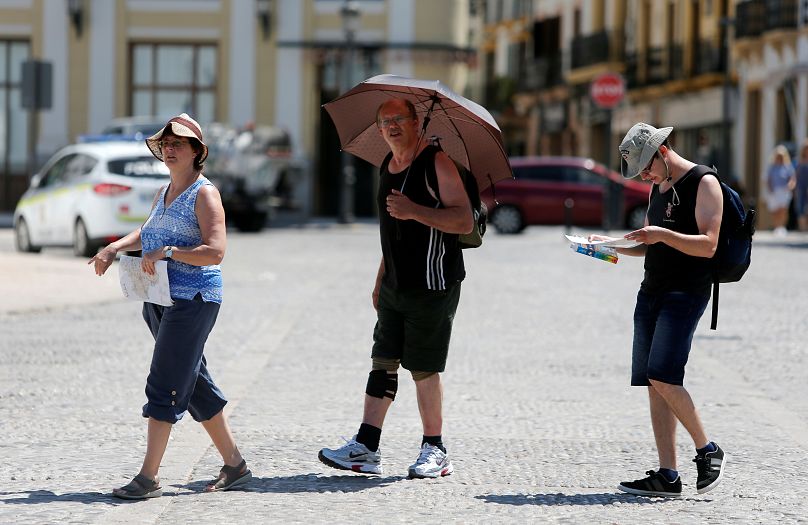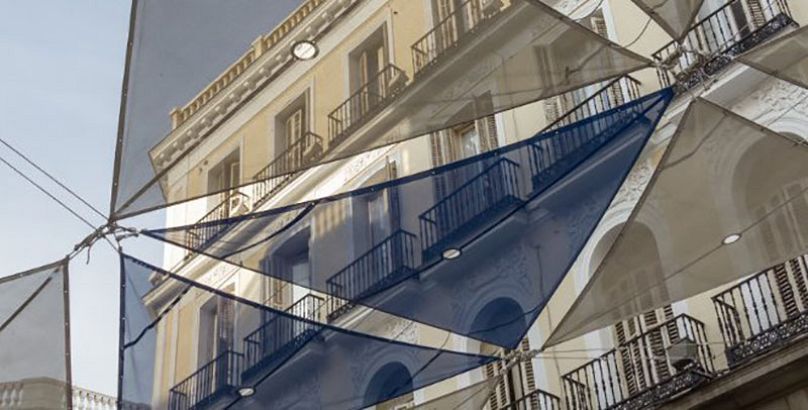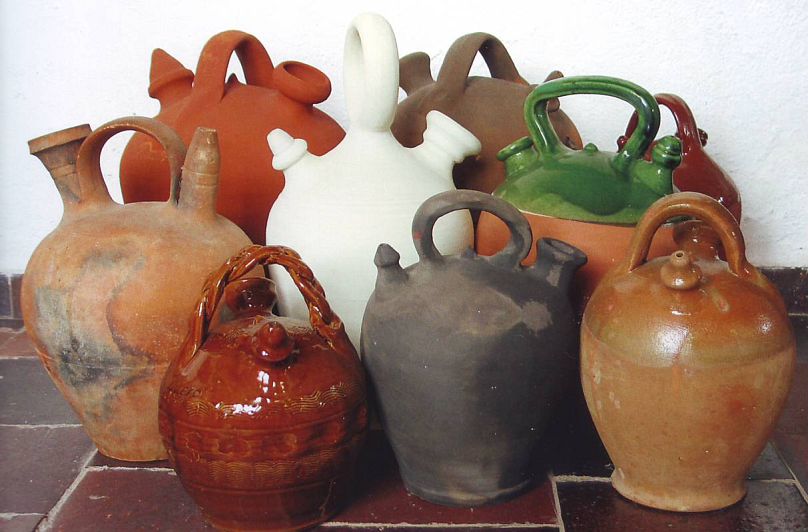As more Countries around the World have to deal with scorching temperatures, here are some tips from the Spanish way of life, better adapted to this weather.
With climate change making heatwaves more likely, Europeans are going to have to get used to living in the sweltering conditions.
Just in the last month, Europe has had one record week of heat and is in all likelihood in the middle of another. It is important to keep safe and try to keep cool as much as possible.
In Spain and other countries of southern Europe, we have lived with these conditions for a long time.
In fact, many of the 'Spanish ways of life' are habits actually created to better deal with the high temperatures.
Here are some tips, from Spain to the rest of Europe and beyond.
Rule number one: stay in the shade
Siesta is possibly the world's better known Spanish habit.
In addition to its health benefits, it turns out that it's sometimes the best — and only way — to survive the heat if you don't have air conditioning.
It's not that much about sleeping as about getting shelter. Have you ever walked around in the concrete of a city in 40ºC temperatures? You will understand instantly.
And that's why many Spanish shops close at midday. Sometimes for more than three hours. Still, these working hours are pretty bad both for productivity and your personal life. Different governments have repeatedly tried to change it, without success.
Having said that, most studies show that Spanish siesta is mainly a myth. Most Spaniards (60%) never take a nap.
With the recurrent heatwaves Europe is experiencing, more and more people understand that the long afternoon breaks are more a matter of survival than a lazy need for sleep.
Rule number two: stay in the shade
We are often surprised (and a bit horrified) to see tourists staying in the sun for hours, as soon as they arrived in Spain.
We are also half-worried and half-appalled to see tourists visiting the city centres at 3 pm when the sun is at its strongest.
No, really. In dry and sunny conditions, with temperatures above 36ºC, stay in the shade as much as possible. Don't worry, you will get your suntan anyway.
Many people tend to think we can stay in the sun for hours: "Hey, you're Spanish, you are used to it". No. I'm Spanish, so I know that you have to avoid it as much as possible!
The narrower the streets are, the merrier you are. Many Spanish city centres have Arabic heritage, as most of Spain was Muslim for centuries in the Middle Ages. From Zaragoza to Seville, the old City centre streets are intricated labyrinths offering natural shade throughout the day.
When the streets are wider, many local authorities put up shade in the main commercial streets as here, in Madrid.
Rule number three: stay in the shade
Unless you have major obligations — or a good place to swim while staying in the shade — you don't want to go out until 4 pm. Not even at 6 pm, in fact.
Foreigners are often surprised by how late Spaniards have dinner or go out at night. But as many more Europeans know by now, if the maximum temperatures have reached 40ºC, there's nothing to do out there before 8 pm or even later. So stay cool, and wait a little bit to meet your friends or go for a walk. Anyway, it will be very difficult to sleep with temperatures above 25ºC so the night is the only moment when you can hope to breathe some fresh air.
Keep calm and have a gazpacho
Everybody should know by now that hydration is one of the keys to go through an extreme heatwave. Gazpacho, made from mainly tomatoes and cucumbers (recipes are secret and infinite) is 95% water. Served cold, it can be a life-saving remedy after some time in the heatwave.
Tapas, possibly the world's second best known Spanish habit, is also well adapted to heat. Having a heavy meal can worsen the effects of the heat. Eating smaller quantities of fresh food (gazpacho but also salads, meat or fish without a thick creamy sauce) is the key to having a happier heatwave.
In Spain, it is also quite common to order a café con hielo (iced coffee). It's not the "frappé" we all know, it's just a normal coffee you pour on a glass with ice cubes. The advantage is that coffee gets cold quickly but doesn't get flooded with the meltwater. And it works.
And sangría?
Fiesta is possibly the world's third best known Spanish habit. Or is it the first? Could it be somehow linked to the fact that it's very difficult to sleep early with high temperatures?
In general, alcohol is not a great idea with high temperatures, that is probably why the "national drink" in Spain are sangría or very light beers, sometimes even mixed with lemonade, served very, very cold, please.
Another Spanish secret to staying cool is botijo. The porous clay of this traditional Mediterranean container keeps water cold despite high temperatures. Now widely in misuse, it was the best friend of Spanish farmers or construction workers in the hottest areas like Andalusia, Castilla, Aragon or the East of the Iberian Peninsula.
Many of our readers took to social media to remind us about a key survival tool that you will find in almost every Spanish house, as well as a lot of Southern Europe — "persianas". These blinds that fix on the outside of windows offer full shade from the sun and some protection from the heat. Thanks for the reminder!
Still, heatwaves are to be taken very seriously. The International Federation of Red Cross and Red Crescent Societies (IFRC) recently called for urgent action to tackle what it called a “silent killer”.
While these tips and tricks from Spain are useful, you should always follow the official recommendations from authorities.
I hope it helps. Good luck!














